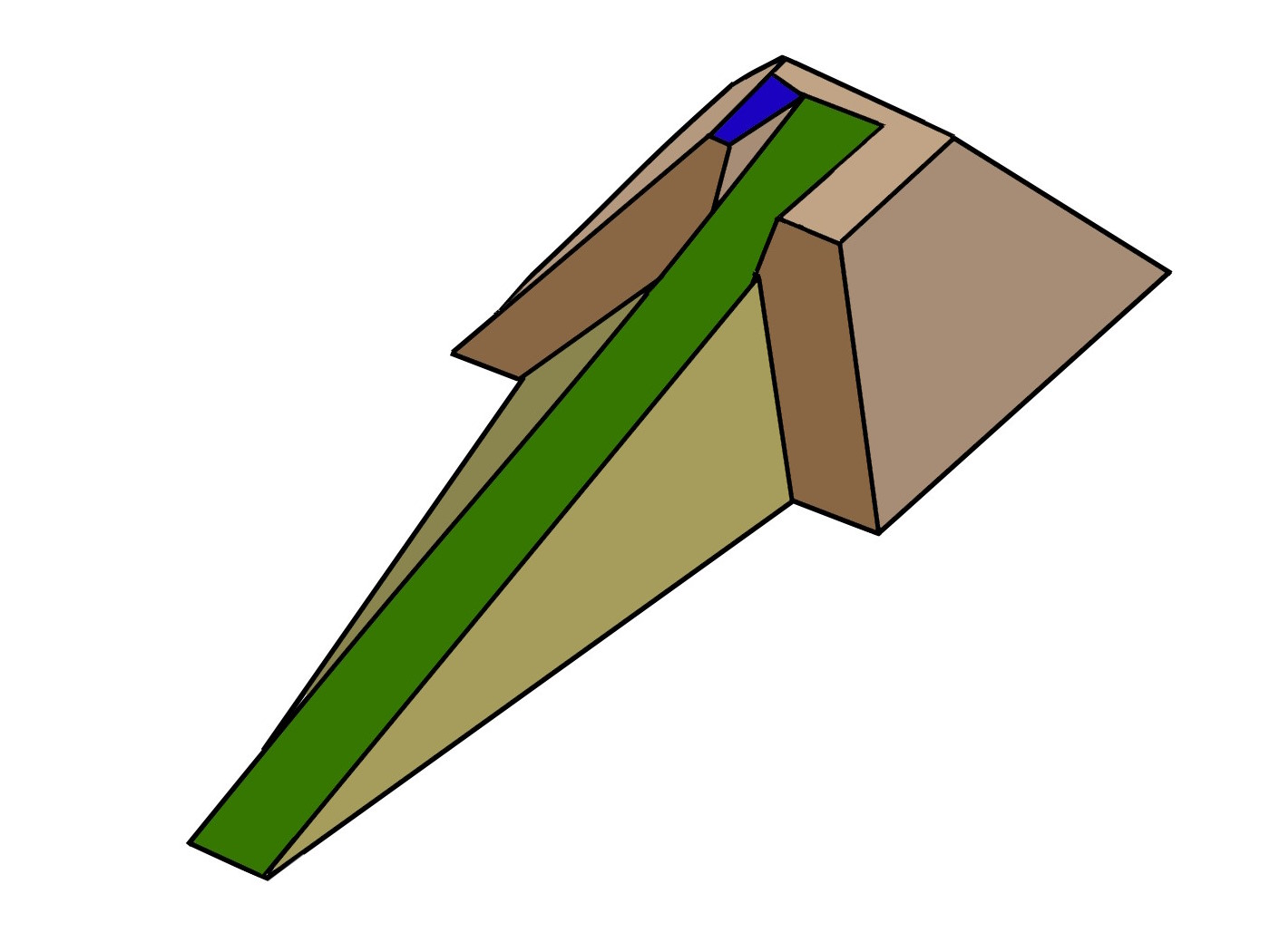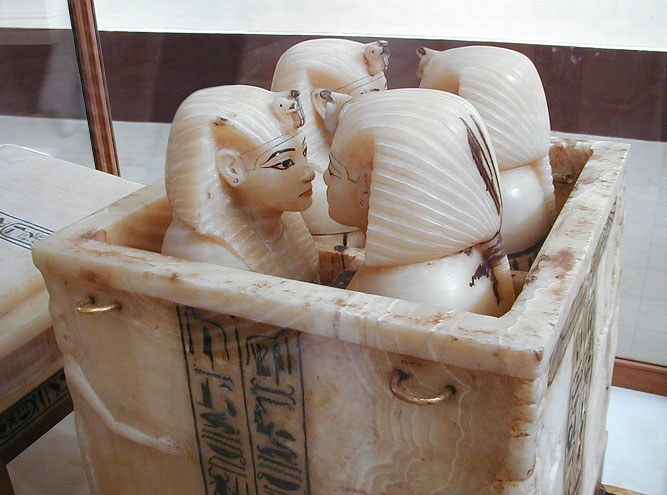|
Itakayt
Itakayt was an ancient Egyptian princess and queen of the 12th Dynasty, around 1800 BC. She is mainly known from her small pyramid next to the one of Senusret III at Dahshur.Dieter Arnold: ''The Pyramid Complex of Senwosret III at Dahshur, Architectural Studies'', New York 2002, , p. 63-67 She had the titles ''king's daughter of his body'', ''powerful, graceful'' and ''beloved''. The Pyramid Her pyramid at the North side of the king's pyramid measured about 16.80 m at the base, and was once perhaps also 16.80 m high. It was built of mud bricks and covered with limestone slabs. In front of the pyramid was a small chapel decorated with reliefs. The remains of the reliefs preserved Itakayt's name. Her burial chamber contained a sarcophagus, a canopic chest and two canopic jars. Other sources Itakayt is perhaps also known from a papyrus fragment found at Lahun. Here, family members of a king are listed, including Itakayt. It is uncertain to which king these members of a royal family ... [...More Info...] [...Related Items...] OR: [Wikipedia] [Google] [Baidu] |
Senusret III
Khakaure Senusret III (also written as Senwosret III or the hellenised form, Sesostris III) was a pharaoh of Ancient Egypt, Egypt. He ruled from 1878 BC to 1839 BC during a time of great power and prosperity, and was the fifth king of the Twelfth dynasty of Egypt, Twelfth Dynasty of the Middle Kingdom of Egypt, Middle Kingdom. He was a great pharaoh of the Twelfth Dynasty and is considered to rule at the height of the Middle Kingdom. Consequently, he is regarded as one of the sources for the legend about Sesostris. His military campaigns gave rise to an era of peace and economic prosperity that reduced the power of nomarch, regional rulers and led to a revival in craftwork, trade, and urban development."''The Pyramids: Their Archeology and History''", Miroslav Verner, Translated by Steven Rendall, p386–387 & p416–421, Atlantic, Senusret III was among the few Egyptian kings who were deified and honored with a List of pharaohs deified during lifetime, cult during their own lifet ... [...More Info...] [...Related Items...] OR: [Wikipedia] [Google] [Baidu] |
Senusret II
Senusret II or Sesostris II was the fourth pharaoh of the Twelfth Dynasty of Egypt. His pyramid was constructed at El-Lahun. Senusret II took a great deal of interest in the Faiyum oasis region and began work on an extensive irrigation system from Bahr Yussef through to Lake Moeris through the construction of a dike at El-Lahun and the addition of a network of drainage canals. The purpose of his project was to increase the amount of cultivable land in that area. The importance of this project is emphasized by Senusret II's decision to move the royal necropolis from Dahshur to El-Lahun where he built his pyramid. This location would remain the political capital for the 12th and 13th Dynasties of Egypt. Senusret II was known by his prenomen Khakheperre, which means "The Ka of Re comes into being". The king also established the first known workers' quarter in the nearby town of Senusrethotep ( Kahun). Reign Co-regency Co-regencies are a major issue for Egyptologists' understandi ... [...More Info...] [...Related Items...] OR: [Wikipedia] [Google] [Baidu] |
Ancient Egypt
Ancient Egypt () was a cradle of civilization concentrated along the lower reaches of the Nile River in Northeast Africa. It emerged from prehistoric Egypt around 3150BC (according to conventional Egyptian chronology), when Upper and Lower Egypt were amalgamated by Menes, who is believed by the majority of List of Egyptologists, Egyptologists to have been the same person as Narmer. The history of ancient Egypt unfolded as a series of stable kingdoms interspersed by the "Periodization of ancient Egypt, Intermediate Periods" of relative instability. These stable kingdoms existed in one of three periods: the Old Kingdom of Egypt, Old Kingdom of the Early Bronze Age; the Middle Kingdom of Egypt, Middle Kingdom of the Middle Bronze Age; or the New Kingdom of Egypt, New Kingdom of the Late Bronze Age. The pinnacle of ancient Egyptian power was achieved during the New Kingdom, which extended its rule to much of Nubia and a considerable portion of the Levant. After this period, Egypt ... [...More Info...] [...Related Items...] OR: [Wikipedia] [Google] [Baidu] |
12th Dynasty
The Twelfth Dynasty of ancient Egypt (Dynasty XII) is a series of rulers reigning from 1991–1802 BC (190 years), at what is often considered to be the apex of the Middle Kingdom (Dynasties XI–XIV). The dynasty periodically expanded its territory from the Nile delta and valley South beyond the second cataract and East into Canaan. The Twelfth Dynasty was marked by relative stability and development. It has a notably well recorded history for the period. Its first pharaoh was Amenemhat I and its final was Sobekneferu. History The chronology of the Twelfth Dynasty is the most stable of any period before the New Kingdom. The Turin Royal Canon gives 213 years (1991–1778 BC). Manetho stated that it was based in Thebes, but from contemporary records it is clear that the first king of this dynasty, Amenemhat I, moved its capital to a new city named "Amenemhat-itj-tawy" ("Amenemhat the Seizer of the Two Lands"), more simply called, Itjtawy. The location of Itjtawy has not bee ... [...More Info...] [...Related Items...] OR: [Wikipedia] [Google] [Baidu] |
Dahshur
DahshurAlso transliterated ''Dahshour'' (in English often called ''Dashur''; ' ) is an ancient Egyptian pyramid complex and necropolis and shares the name of the nearby village of Manshiyyat Dahshur () in markaz Badrashin, Giza Governorate, Giza. Dahshur is listed as a UNESCO World Heritage Site, and is located on the Western Desert (Egypt), Western Desert plateau at the edge of the cultivated plain, and along with the pyramid complexes at Saqqara, Abusir, and Giza pyramid complex, Giza, to its north, forms the Memphite Necropolis, pyramid fields of the ancient capital city of Memphis, Egypt, Memphis. It is known chiefly for several pyramids, mainly Sneferu, Sneferu's Bent Pyramid and the Red Pyramid, which are among the oldest, largest and best preserved in Egypt, built from 2613 to 2589 BC. Pyramids The Dahshur pyramids were an extremely important learning experience for the Egyptians. It provided them with the knowledge and know-how to transition from step-sided pyramids ... [...More Info...] [...Related Items...] OR: [Wikipedia] [Google] [Baidu] |
Dieter Arnold
Dieter Arnold (born 1936 in Heidelberg) is a German archaeology, archaeologist. Biography He received his doctorate on 31 January 1961 from the Ludwig Maximilian University of Munich, University of Munich with the thesis "Wall relief and spatial function in Egyptian temples of the New Kingdom". Arnold worked for the German Archaeological Institute in Cairo during excavations in Dahshur, Deir el-Bahari and El-Tarif. From 1979 to 1984 he was a professor at the University of Vienna and then a curator at the Egyptian Department of the Metropolitan Museum of Art in New York City, New York. Arnold's specialty is the architecture of Ancient Egypt. As an employee of the Metropolitan Museum, he leads the museum's annual expeditions to el-Lisht and Dahshur. In 1981 he published a proposal for the construction of the Great Pyramid of Giza, Great Pyramid. The ramp runs first outside and then in a corridor inside the pyramid. Arnold was aware that the construction method could not be explain ... [...More Info...] [...Related Items...] OR: [Wikipedia] [Google] [Baidu] |
Limestone
Limestone is a type of carbonate rock, carbonate sedimentary rock which is the main source of the material Lime (material), lime. It is composed mostly of the minerals calcite and aragonite, which are different Polymorphism (materials science), crystal forms of calcium carbonate . Limestone forms when these minerals Precipitation (chemistry), precipitate out of water containing dissolved calcium. This can take place through both biological and nonbiological processes, though biological processes, such as the accumulation of corals and shells in the sea, have likely been more important for the last 540 million years. Limestone often contains fossils which provide scientists with information on ancient environments and on the evolution of life. About 20% to 25% of sedimentary rock is carbonate rock, and most of this is limestone. The remaining carbonate rock is mostly Dolomite (rock), dolomite, a closely related rock, which contains a high percentage of the mineral Dolomite (mine ... [...More Info...] [...Related Items...] OR: [Wikipedia] [Google] [Baidu] |
Canopic Chest
Canopic chests are cases used by ancient Egyptians to contain the internal organs removed during the process of mummification. Once canopic jars began to be used in the late Fourth Dynasty, the jars were placed within canopic chests. Although the first proven canopic burials date from the Fourth Dynasty reign of Sneferu, there is evidence to suggest that there were canopic installations at Saqqara dating from the Second Dynasty.Dodson, Aidan, "Canopic Jars and Chests", in Redford, Donald B. (ed) (2001). ''The Oxford Encyclopedia of Ancient Egypt'', vol. II, Oxford University Press. pp. 231–235 Connections to Ancient Egyptian culture Canopic chests had an important place in Egyptian culture. Canopic chests contained the internal organs (viscera) of mummies, so they relate to the Egyptian belief that the afterlife is just as important as life on earth. Egyptians believed that everything had to be perfectly preserved to journey into the land after life and as part of the mum ... [...More Info...] [...Related Items...] OR: [Wikipedia] [Google] [Baidu] |
Lahun
El Lahun ( ''El Lāhūn,'' alt. Illahun, Lahun, or Kahun, (the latter being a neologism coined by archaeologist William Matthew Flinders Petrie) is a town and pyramid complex in Faiyum, Egypt founded by Senusret II. The Pyramid of Senusret II () is located near the modern town, and is often called the Pyramid of Lahun. The site was occupied during the Middle Kingdom into the late Thirteenth Dynasty, and then again in the New Kingdom. The ancient name of the site was rꜣ-ḥn.t, literally, "Mouth (or Opening) of the Canal". It was known as Ptolemais Hormos () in Ptolemaic Egypt. There are multiple areas at El Lahun including the Pyramid of Senwosret II, cemeteries, the Valley temple, and the town of Kahun. It contains many artifacts of daily life like pottery from the Middle Kingdom and evidence of administrative procedures seen on papyri and seals. Excavation history El Lahun was initially excavated by William Flinders Petrie in 1889-1890. He mapped the town of Kahun, loca ... [...More Info...] [...Related Items...] OR: [Wikipedia] [Google] [Baidu] |
Princesses Of The Twelfth Dynasty Of Egypt
Princess is a title used by a female member of a regnant monarch's family or by a female ruler of a principality. The male equivalent is a prince (from Latin ''princeps'', meaning principal citizen). Most often, the term has been used for the consort of a prince, or for the daughter of a monarch. A crown princess can be the heir apparent to the throne or the spouse of the heir apparent. Princess as a substantive title Some princesses are reigning monarchs of principalities. There have been fewer instances of reigning princesses than reigning princes, as most principalities excluded women from inheriting the throne. An example of a princess regnant is Constance of Antioch, princess regnant of Antioch in the 12th century. Since the president of France, an office for which women are eligible, is ''ex-officio'' a co-prince of Andorra, then Andorra could theoretically be jointly ruled by a princess. Princess as a courtesy title Descendants of monarchs For many centuries, the t ... [...More Info...] [...Related Items...] OR: [Wikipedia] [Google] [Baidu] |








